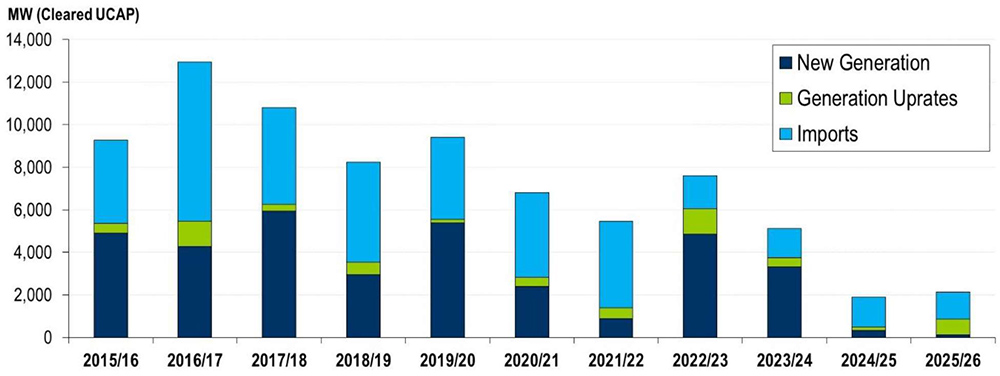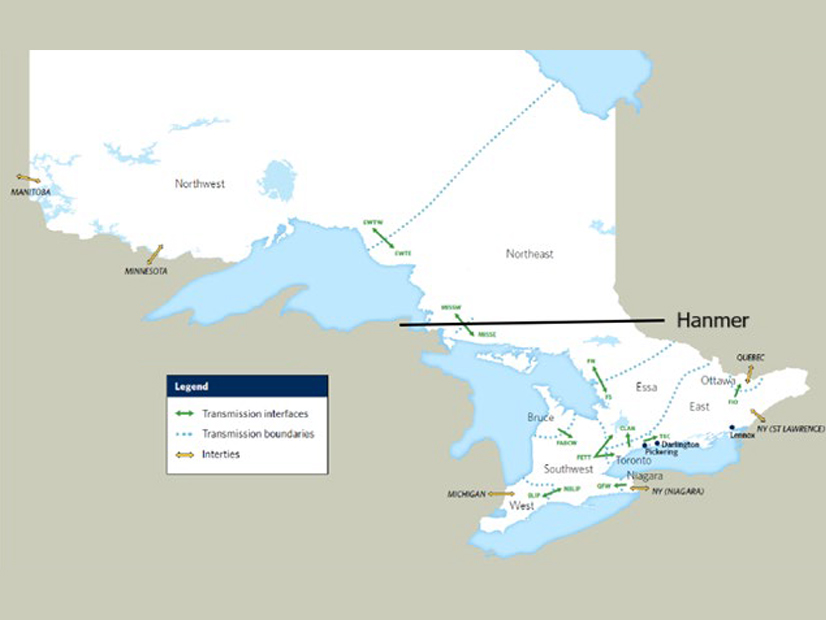VALLEY FORGE, Pa. —Stakeholders rejected the installed reserve margin (IRM) and forecast pool requirement (FPR) values recommended by PJM staff, with some opposed arguing that the inputs remain nebulous.
The July 23 Markets and Reliability vote received 65% sector-weighted support, just short of the two-thirds threshold; a second vote at the Members Committee also failed with 63% sector-weighted support.
The proposal would increase the IRM to 20% for the 2027/28 Base Residual Auction (BRA), up from 19.1% in the auction prior, while the FPR would increase from 0.9170 to 0.9260. PJM’s Josh Bruno said both are increasing due to PJM’s risk modeling skewing more heavily toward the winter. (See “Stakeholders Discuss Revised IRM and FPR Values for 3rd Incremental Auction,” PJM PC/TEAC Briefs: Jan. 7, 2025.)
Paul Sotkiewicz, president of E-Cubed Policy Associates representing J-Power USA, said the effective load-carrying capability modeling behind resource accreditation and risk modeling is poorly understood by market participants, and its results are unreproducible.
“This is a black box — people still don’t understand how anything is put together, and you can’t run a market … by doing this as a black box. So, we really need to consider taking our time and really hearing out what needs to be done here,” he said.
Exelon’s Alex Stern noted that few of the 500 eligible voting members voted on the proposal, with the final MC vote reflecting 45 ballots cast in favor, 25 cast in opposition and 15 abstentions.
Bruno said 198 GW of installed capacity is expected to be available, up 4.6 GW, equating to 163 GW of solved load, a 2.5 GW increase. The increase comes from transmission headroom being allocated to existing resources through transitional capacity interconnection rights, new wind and solar resources, and increased demand response accreditation driven by the resource’s availability window being expanded. (See “PJM Announces Transitional Headroom Allocations,” PJM PC/TEAC Briefs: May 9, 2023 and PJM Stakeholders Endorse More Detailed Demand Response Modeling.)
Most resource classes would see their accreditation remain within three percentage points of their ratings for the 2026/27 BRA. Demand response, however, saw its rating increase 23 points, and storage resources of all durations saw their ratings increase between six and nine points.
Much of the increased winter risk is due to the steady pace of anticipated data center growth. Because winter falls toward the end of the delivery year, Bruno said more large loads are expected to have come online by that time.
Rebecca Stadelmeyer, of Gabel Associates, said there is a disconnect between the load forecast and the delivery year and raised the request to all companies conducting their analysis now to take a more granular look at data center milestones and ensure the online months align more accurately.
James Wilson, a consultant for several consumer advocates, said data center growth and its relation to seasonal risk is a short-term phenomenon PJM should prevent from causing distortions to the investment signals sent by the capacity market. He acknowledged that capacity auctions print one-year price points but argued that should not be incongruent with the goal of guiding long-term investment.
Greg Poulos, executive director of the Consumer Advocates of the PJM States, said most of the advocates planned to vote against the proposal due to endorsement being sought on the same day as the values were brought for a first read. That left little time, he said, to review and ask questions, particularly about the cost impacts of the increase to the reserve margin. He also questioned whether it is appropriate for PJM to increase the IRM given the tightening supply and demand in recent auctions. Raising the prospect that not doing so could result in more frequent DR deployments, he argued that curtailment service providers are being paid to be available and not using them undermines their value.
Susan Bruce, representing the PJM Industrial Customer Coalition, said consumers and DR participants have gotten a lot of questions about the parameters presented for the 2027/28 auction just a day after the results for the 2026/27 auction were posted. She said it’s unfortunate the membership is being asked to make decisions on a topic so dependent on the results of the 2026/27 BRA with so little time to consider the implications.







